Analysis of serum inflammatory mediators in type 2 diabetic patients and their influence on renal function
- PMID: 32130282
- PMCID: PMC7055870
- DOI: 10.1371/journal.pone.0229765
Analysis of serum inflammatory mediators in type 2 diabetic patients and their influence on renal function
Abstract
Aim: To evaluate the serum concentrations of inflammatory mediators in patients with type 2 diabetes mellitus (T2DM) with or without renal alteration (RA) function.
Methods: Serum samples from 76 patients with T2DM and 24 healthy individuals were selected. Patients with T2DM were divided into two groups according to eGFR (> or < 60mL/min/1.73m2). Cytokines, chemokines and adipokines levels were evaluated using the Multiplex immunoassay and ELISA.
Results: TNFR1 and leptin were higher in the T2DM group with RA than in the T2DM group without RA and control group. All patients with T2DM showed increased resistin, IL-8, and MIP-1α compared to the control group. Adiponectin were higher and IL-4 decreased in the T2DM group with RA compared to the control group. eGFR positively correlated with IL-4 and negatively with TNFR1, TNFR2, and leptin in patients with T2DM. In the T2DM group with RA, eGFR was negatively correlated with TNFR1 and resistin. TNFR1 was positively correlated with resistin and leptin, as well as resistin with IL-8 and leptin.
Conclusion: Increased levels of TNFR1, adipokines, chemokines and decrease of IL-4 play important role in the inflammatory process developed in T2DM and decreased renal function. We also suggest that TNFR1 is a strong predictor of renal dysfunction in patients with T2DM.
Conflict of interest statement
The authors have declared that no competing interests exist.
Figures
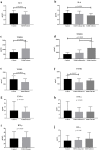
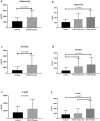
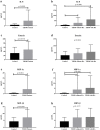
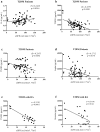
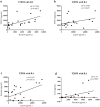
Similar articles
-
Correlation between adipokines and mediators of non-specific inflammation in type 2 diabetic patients depending on the glycaemic control.Wiad Lek. 2018;71(6):1169-1174. Wiad Lek. 2018. PMID: 30267495
-
Serum cytokine, chemokine and hormone levels in Saudi adults with pre-diabetes: a one-year prospective study.Int J Clin Exp Pathol. 2015 Sep 1;8(9):11587-93. eCollection 2015. Int J Clin Exp Pathol. 2015. PMID: 26617895 Free PMC article.
-
Reduced serum CTRP12 levels in type 2 diabetes are associated with renal dysfunction.Int Urol Nephrol. 2020 Dec;52(12):2321-2327. doi: 10.1007/s11255-020-02591-y. Epub 2020 Jul 30. Int Urol Nephrol. 2020. PMID: 32734505
-
Adipokines as potential biomarkers for type 2 diabetes mellitus in cats.Front Immunol. 2022 Sep 30;13:950049. doi: 10.3389/fimmu.2022.950049. eCollection 2022. Front Immunol. 2022. PMID: 36248900 Free PMC article. Review.
-
New Insights into Adipokines as Potential Biomarkers for Type-2 Diabetes Mellitus.Curr Med Chem. 2019;26(22):4119-4144. doi: 10.2174/0929867325666171205162248. Curr Med Chem. 2019. PMID: 29210636 Review.
Cited by
-
Antioxidant and anti-inflammatory effects of Boswellia dalzielii and Hibiscus sabdariffa extracts in alloxan-induced diabetic rats.Metabol Open. 2024 Feb 23;21:100278. doi: 10.1016/j.metop.2024.100278. eCollection 2024 Mar. Metabol Open. 2024. PMID: 38455229 Free PMC article.
-
In situ assessment of Mindin as a biomarker of podocyte lesions in diabetic nephropathy.PLoS One. 2023 May 2;18(5):e0284789. doi: 10.1371/journal.pone.0284789. eCollection 2023. PLoS One. 2023. PMID: 37130106 Free PMC article.
-
Immunological Imbalances Associated with Epileptic Seizures in Type 2 Diabetes Mellitus.Brain Sci. 2023 Apr 27;13(5):732. doi: 10.3390/brainsci13050732. Brain Sci. 2023. PMID: 37239204 Free PMC article. Review.
-
Changes of Serum Inflammatory Molecules and Their Relationships with Visual Function in Retinitis Pigmentosa.Invest Ophthalmol Vis Sci. 2020 Sep 1;61(11):30. doi: 10.1167/iovs.61.11.30. Invest Ophthalmol Vis Sci. 2020. PMID: 32936303 Free PMC article.
-
Efficacy of high-intensity interval and continuous endurance trainings on cecal microbiota metabolites and inflammatory factors in diabetic rats induced by high-fat diet.PLoS One. 2024 Apr 16;19(4):e0301532. doi: 10.1371/journal.pone.0301532. eCollection 2024. PLoS One. 2024. PMID: 38626052 Free PMC article.
References
Publication types
MeSH terms
Substances
LinkOut - more resources
Full Text Sources
Medical
Research Materials
Miscellaneous

